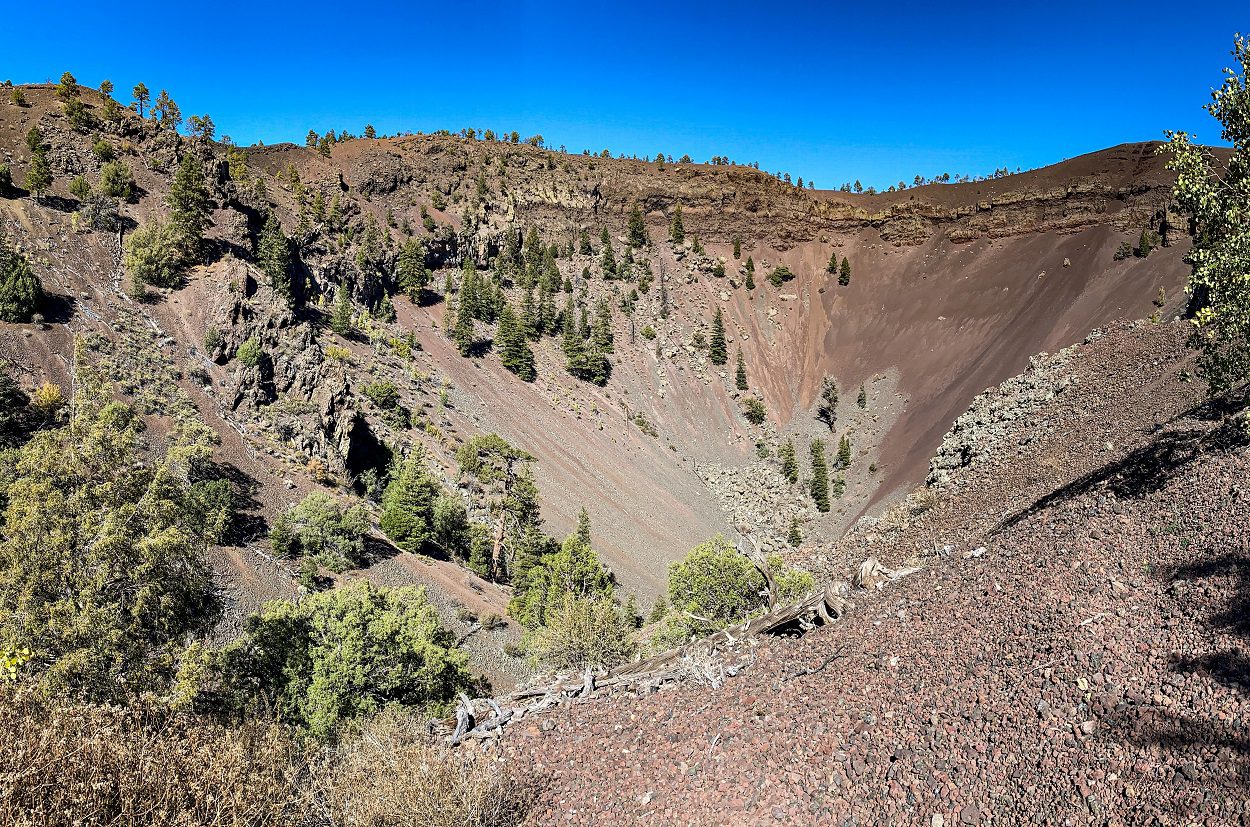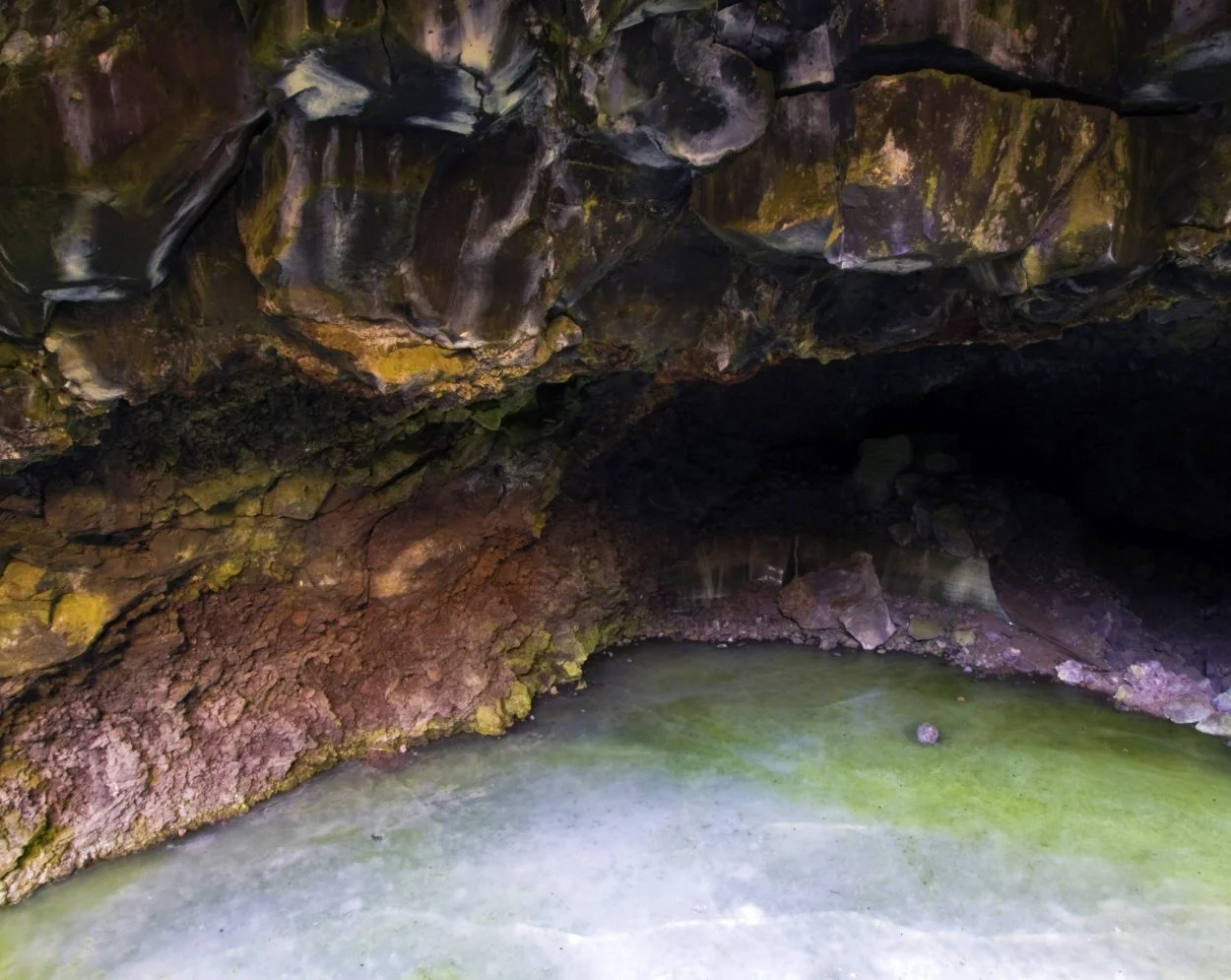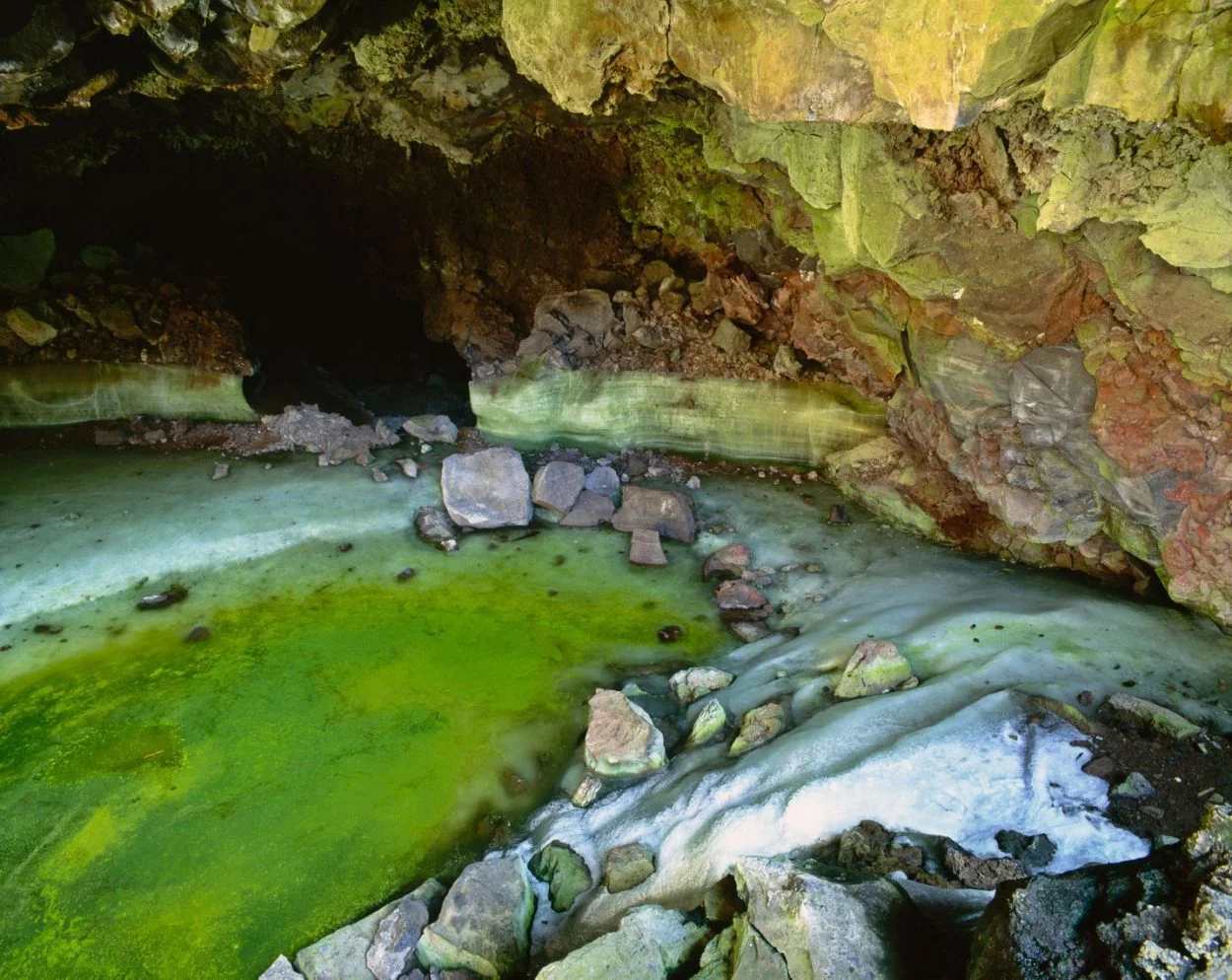Located in the American Southwest on the Continental Divide, in Grants New Mexico, the Bandera Volcano lies dormant, adjacent to the geological wonder of a subterranean ice cave.
As it stands today, the volcano is a prime example of a cinder cone, a collection of loose pyroclastic fragments, such as volcanic clinkers, volcanic ash, or cinder that has been built around a volcanic vent.
Bandera erupted approximately 10,000 years ago, (very recently geologically speaking), spewing lava that created a 23 mile long ‘river’. The flowing lava formed an air pocket (or lava tube), which as the lava cooled, the tube partially collapsed into a sinkhole and an open-faced cave.

Over the past 3,400 years, the cave has trapped rainwater through the porous and naturally insulating structure of the lava rock. Typically, lava flows are fractured from the cooling process, however, in a freak-of-nature event, the Bandera Ice cave was born.
Because cooler air sinks and warmer air rises (natural convection), and thanks to the caves unique shape, cold air is trapped inside which maintains an average temperature of around 30-31 Fahrenheit, or -0.5 Celsius. The lava walls and floor perfectly insulate the cave from the warmer weather outside.
Over the past three millennia, the ice has grown to be about 20 feet thick and is tinged with a blue-green hue thanks to trapped arctic algae being reflected by the sun, whilst thin layers of ice are constantly forming due to rainwater that seeps into the cave and freezes.

In addition to the natural beauty of the volcano and ice cave, the site has seen human activity for at least the past 1200 years. Late Anasazi and early Pueblo people occupied the cave, leaving behind a plethora of stone tools, pottery shards and many completely intact pottery vessels. Several Anasazi ruins have also been discovered near the volcano around the base of the lava flow, whose inhabitants stacked lava rocks to form walls that insulated their shelters.
The Bandara site has been managed by the ice cave family since the early 19th century, who first purchased the land in 1915 and used the ice from the cave to cool the beer in a local saloon.
Another site on the volcano is the forest of Douglas fir and Ponderosa pine trees that grow gnarled and twisted out of the lava tubes. Some of the oldest trees in the country live here, with the oldest being around 700 years old.
Header Image Credit : Kerrick James / Alamy Stock Photo





